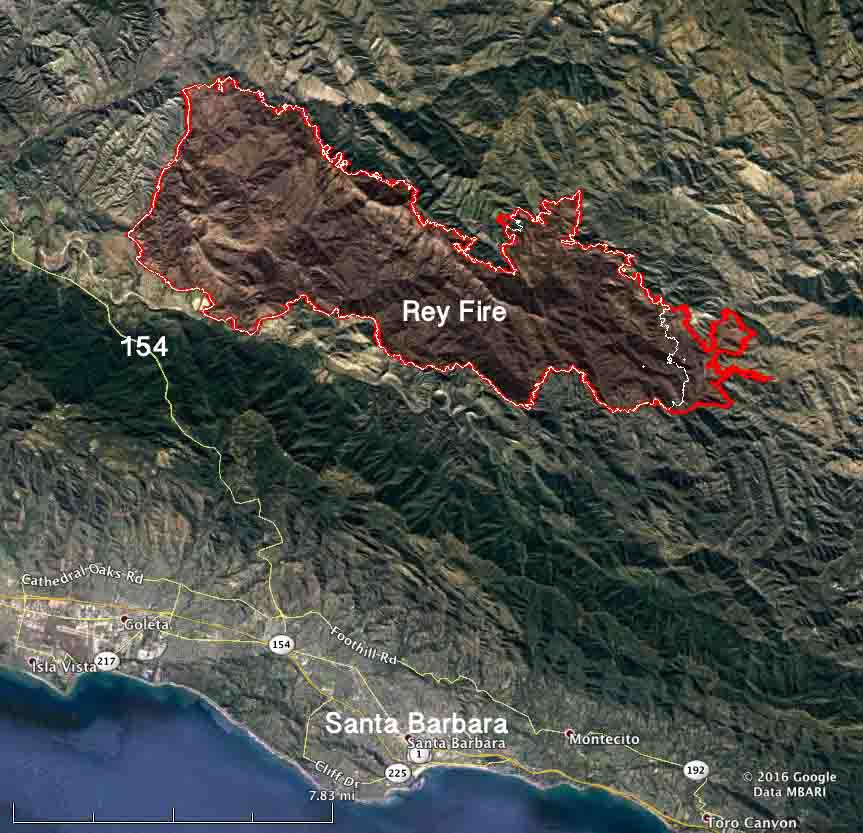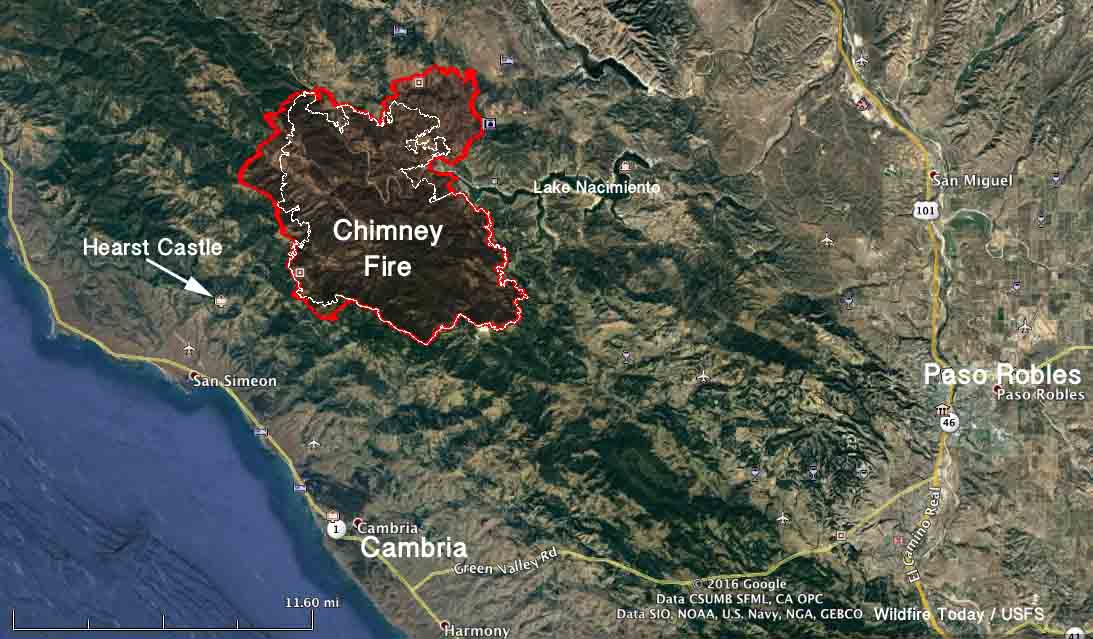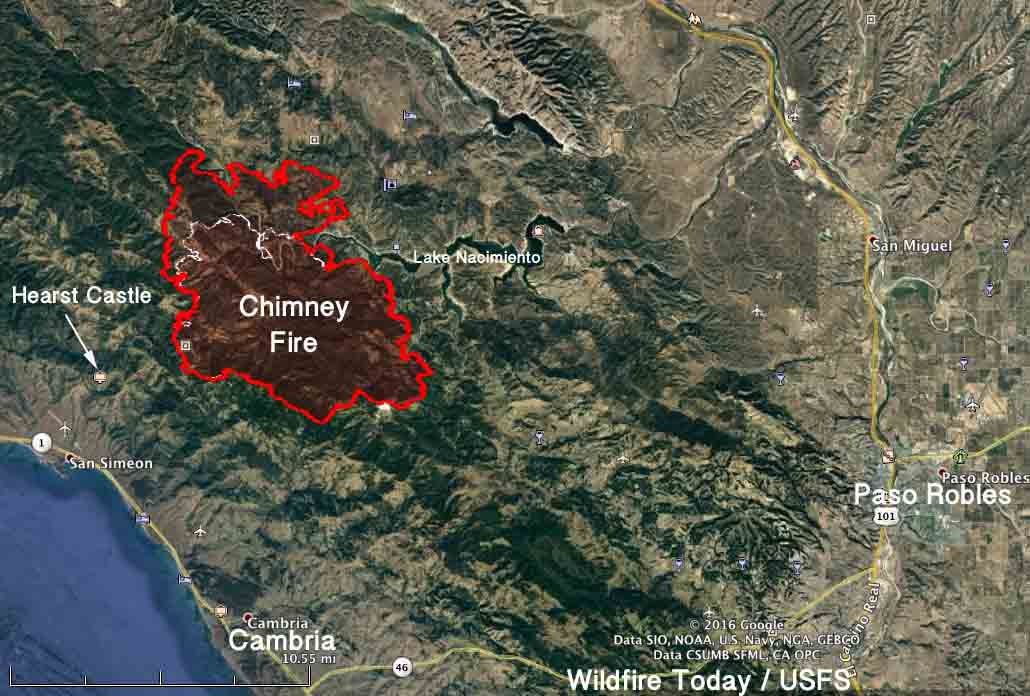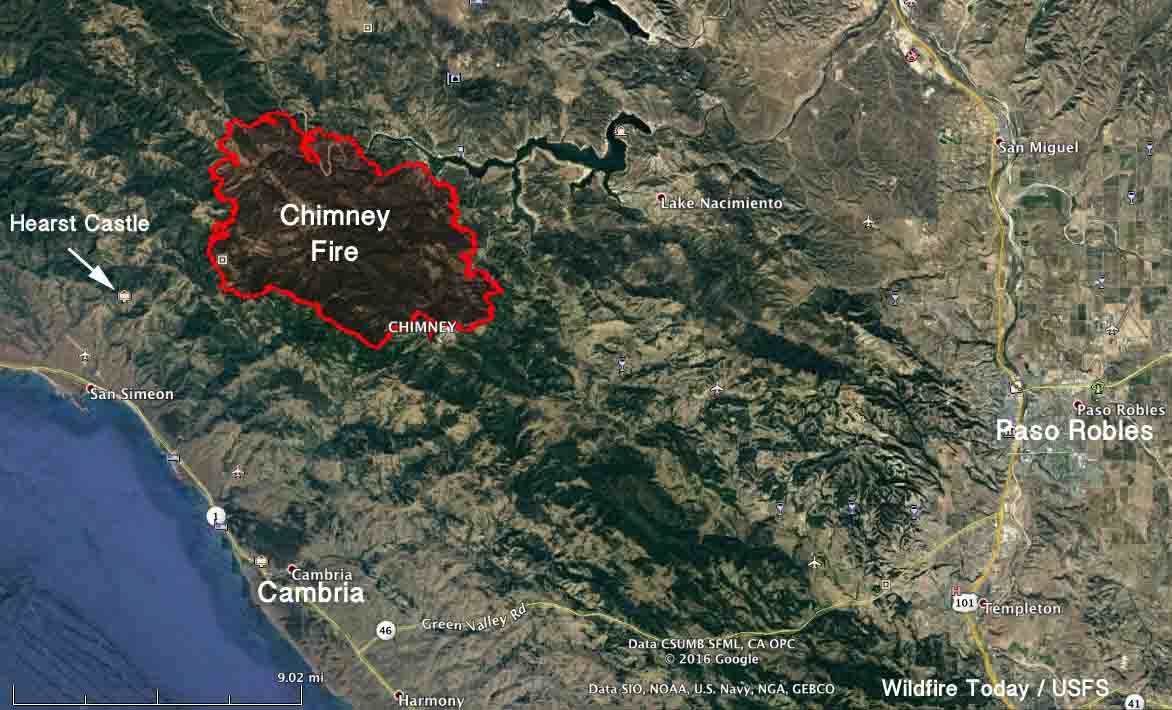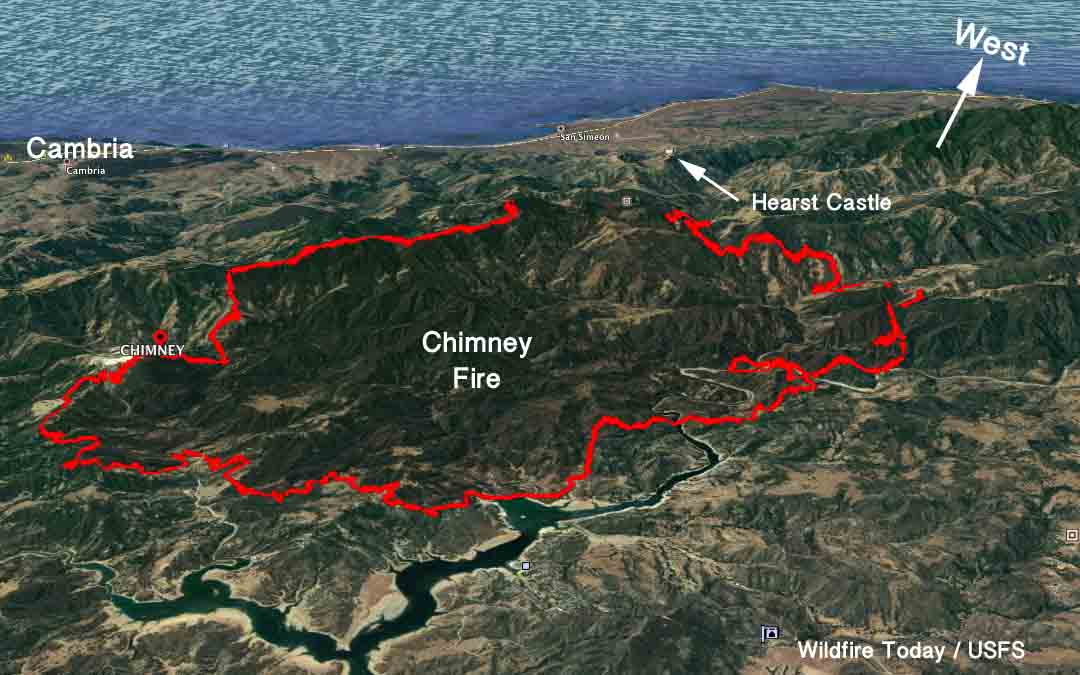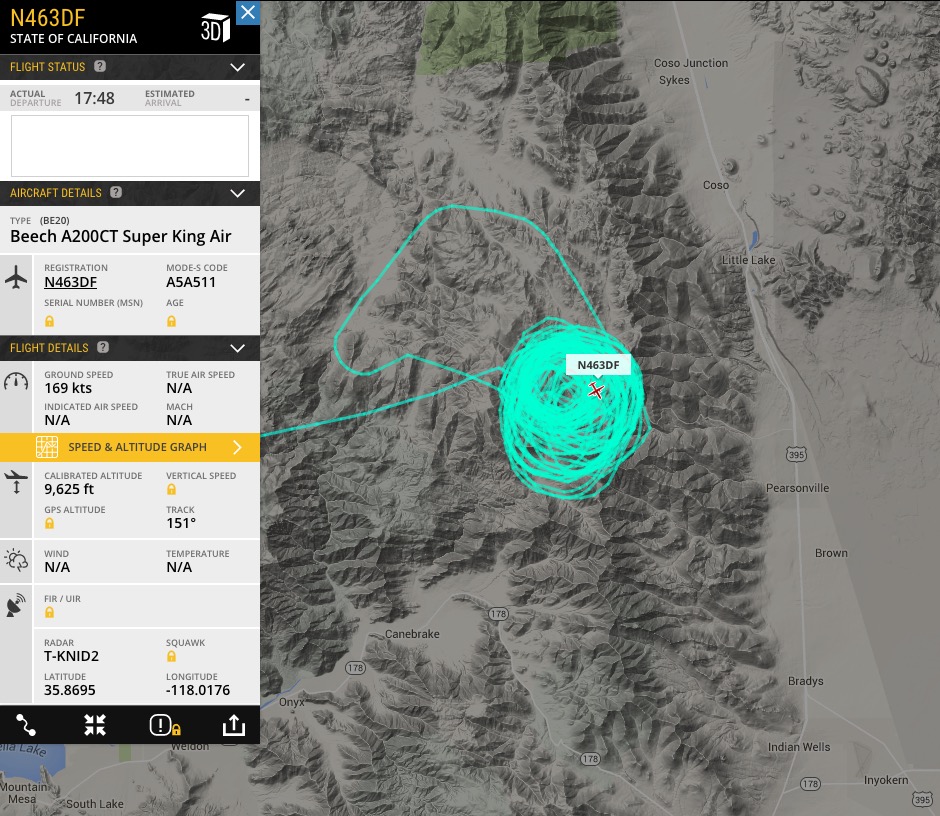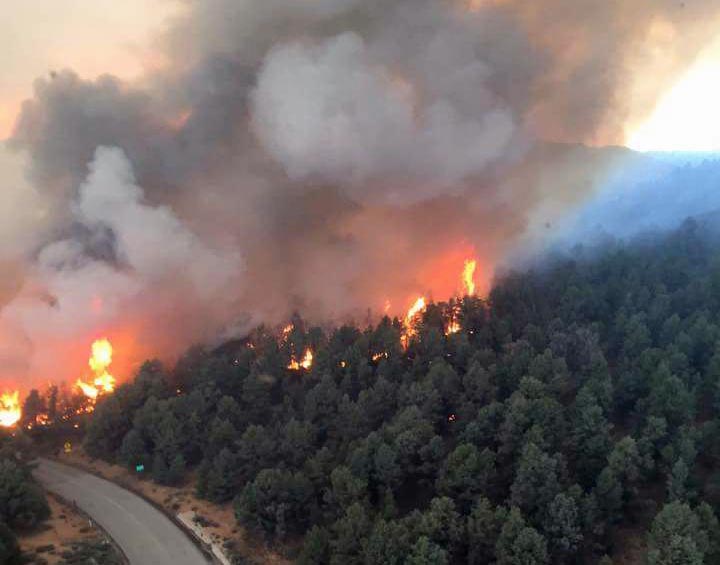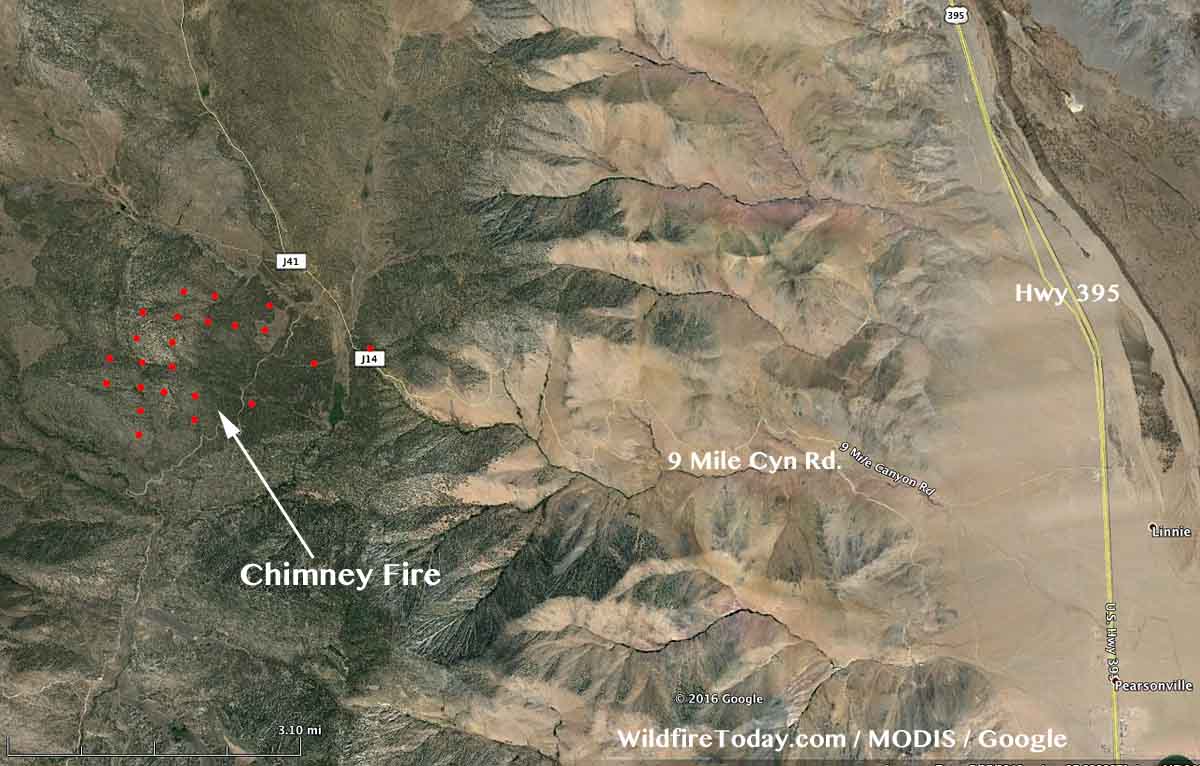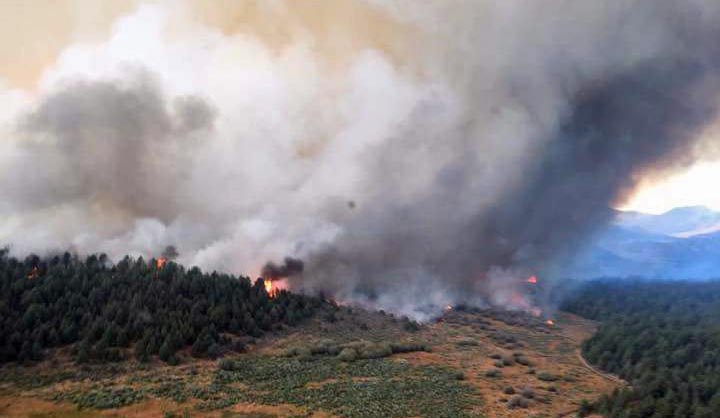Above: Pioneer Fire. Uncredited/undated InciWeb photo.
On Tuesday the Pioneer Fire in central Idaho continued its march to the north, adding another 16,000 acres to bring the total to over 157,000 acres. Burning 32 miles northeast of Boise and 23 miles west of Stanley, it has been creating huge convection columns rising 30,000 feet into the atmosphere for the last two days.
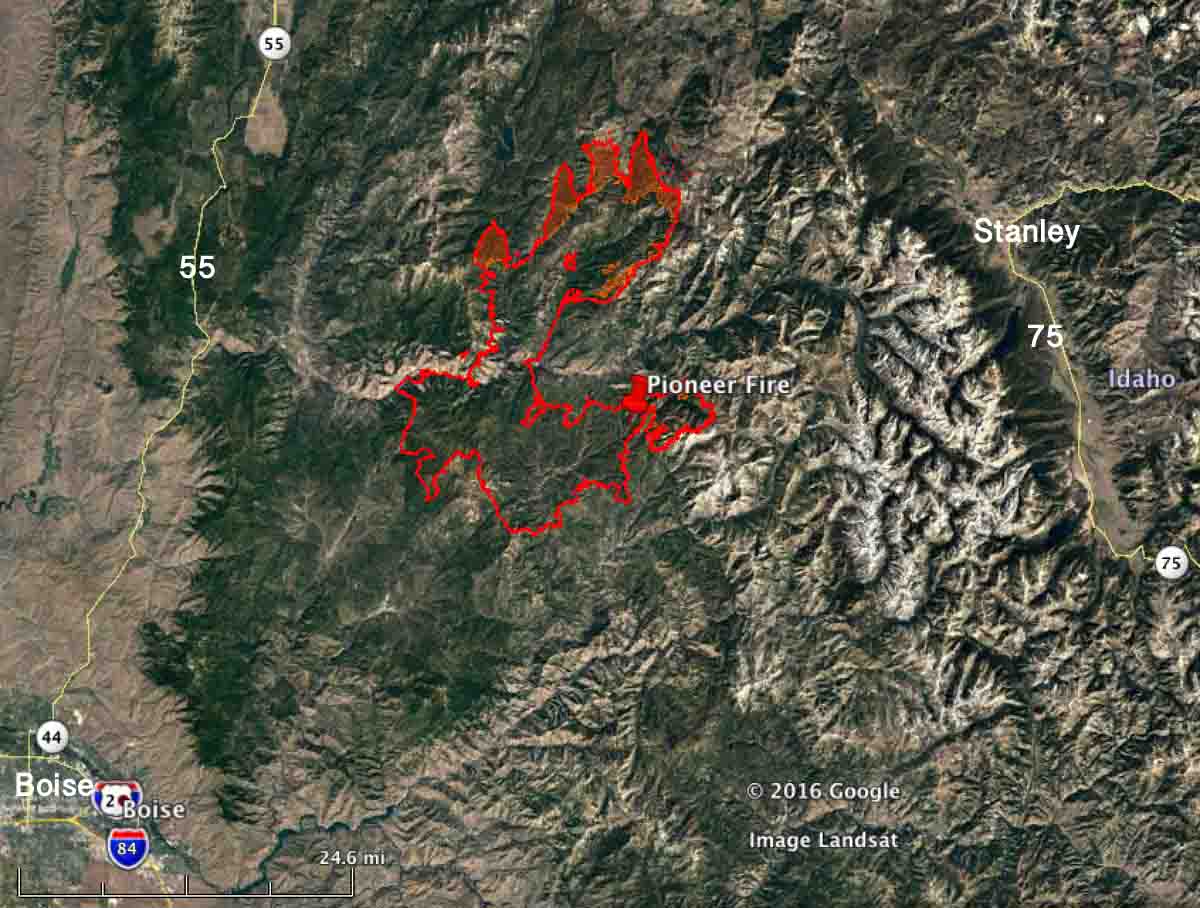
Most of the growth on Tuesday was on the north side while it was pushed by an 8 to 12 mph wind gusting at 18 to 24 that was variable, but mostly out of the south. As we write this at 2:50 p.m. on Wednesday, the wind so far today has been out of the west and northwest at 4 to 10 mph with gusts of 16 to 24. The smoke being pushed to the east will probably make the air quality rather unpleasant in Stanley, due east of the fire.
The fire was very active late into Tuesday night due to the low relative humidity which ranged from 24 to 30 percent during the night at the White Hawk weather station at 8,344 feet elevation. At 2:33 p.m on Wednesday it was 66 degrees with 21 percent humidity.
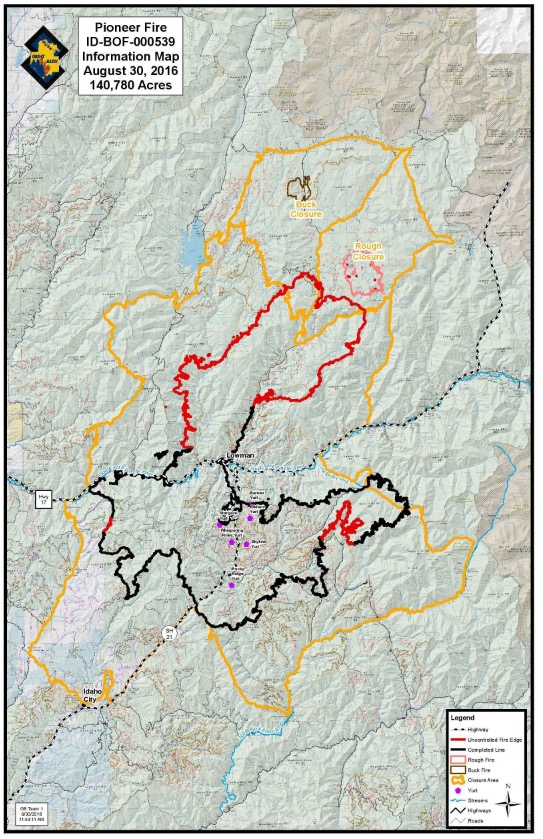
The Pioneer Fire is one of five currently active fires in the United States that are staffed by more than 1,000 personnel.
[ultimatetables 1 /]
As of Tuesday evening the total number of resources assigned to fires in the US included 444 hand crews, 1,060 engines, 147 helicopters, and 19,064 personnel. When the number of crews approaches 500 and there are almost 20,000 personnel committed, you know things are getting busy.




